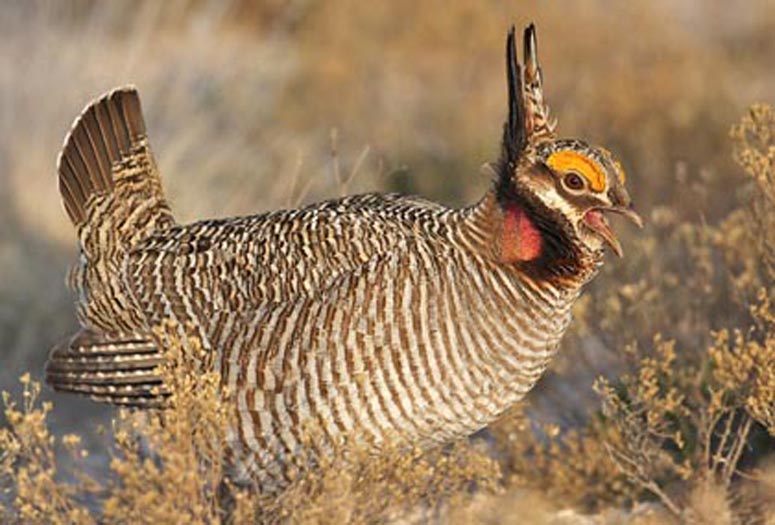
Agricultural News
Oklahoma Landowners, NRCS Partner to Improve Lesser Prairie-Chicken Habitat
Tue, 09 Apr 2013 15:21:27 CDT

With the help of USDA's Natural Resources Conservation Service, farmers and ranchers are doing their part to voluntarily protect and improve habitat for an iconic western bird while improving the land and their operations.
The lesser prairie-chicken was thought to be extinct after the Dust Bowl of the 1930s, and its population declined significantly during droughts in the 1950s and early 1990s.
Farmers and ranchers in Oklahoma have worked with NRCS to improve more than 64,000 acres of lesser prairie-chicken habitat since 2010, using the agency's financial and technical assistance.
Producers in the chicken's five-state territory of Colorado, Kansas, New Mexico, Oklahoma and Texas have improved nearly 1 million acres of habitat through the initiative.
"The fact that we have 40,000 birds during one of the worst droughts is a testament to landowners' conservation activities," said Christian Hagen, NRCS' science advisor to the Lesser Prairie-Chicken Initiative.
More than 90 percent of the chicken's habitat lies on private lands. Its presence is an indicator of the rangeland health of the southern Great Plains.
NRCS provides assistance to remove invasive plant species, improve grazing management and keep marginal lands covered in grass, practices that improve the lesser prairie-chicken's range.
Though the U.S. Fish and Wildlife Service is currently considering whether to list the lesser prairie-chicken as threatened under Endangered Species Act, as a part of an agreement between USDA and the USFWS, farmers and ranchers who voluntarily maintain conservation practices that benefit the chicken may also gain regulatory predictability for up to 30 years.
"Regardless if the species is listed, helping producers conserve habitat for these critical species is our priority," said Galon Hall, a wildlife biologist and coordinator who oversees NRCS' work with seven species across 35 states.
NRCS' goal is to give farmers and ranchers the ability to still use their land while enabling them to do sustainable conservation practices for the bird.
"Voluntary conservation can be done in a way where the landowner chooses the goals. If it's cattle production, then we gear our conservation plan toward that," said Hall.
Invasive plants such as the eastern red cedar in Kansas and Oklahoma and mesquite in New Mexico and Texas provide cover for predators and draw scarce water resources critical to the region.
By removing the invasive plant, there will be more forage for the producers and more habitat for the lesser prairie-chicken, said Jon Ungerer, NRCS' Lesser Prairie-Chicken Initiative coordinator. This also helps operations become more resistant to drought.
Conservation activities for the lesser prairie-chicken and the landscape also benefit populations of quail and pheasants in the region.
For example, conservation activities north of the Arkansas River in Kansas made it one of the few places in the country seeing rising quail populations.
"If you have everything out on the landscape that is providing for the lesser prairie-chicken, you're going to be providing for a whole suite of wildlife species and providing a rangeland with excellent biomass and forage for your cattle," said Hagen.
Landowners using the voluntary approach for the lesser prairie-chicken are not alone. Farmers and ranchers are also restoring the habitats of six other at-risk species across the U.S. with a similar objective - keep working lands working and help reverse the decline of these critical species.
For more information on the conservation practices for the lesser prairie-chicken and other species, go to http://go.usa.gov/2Abe, and for more info on the USFW's lesser prairie-chicken assessment, go to http://www.fws.gov/southwest/es/LPC.html.
WebReadyTM Powered by WireReady® NSI
Top Agricultural News
More Headlines...




















